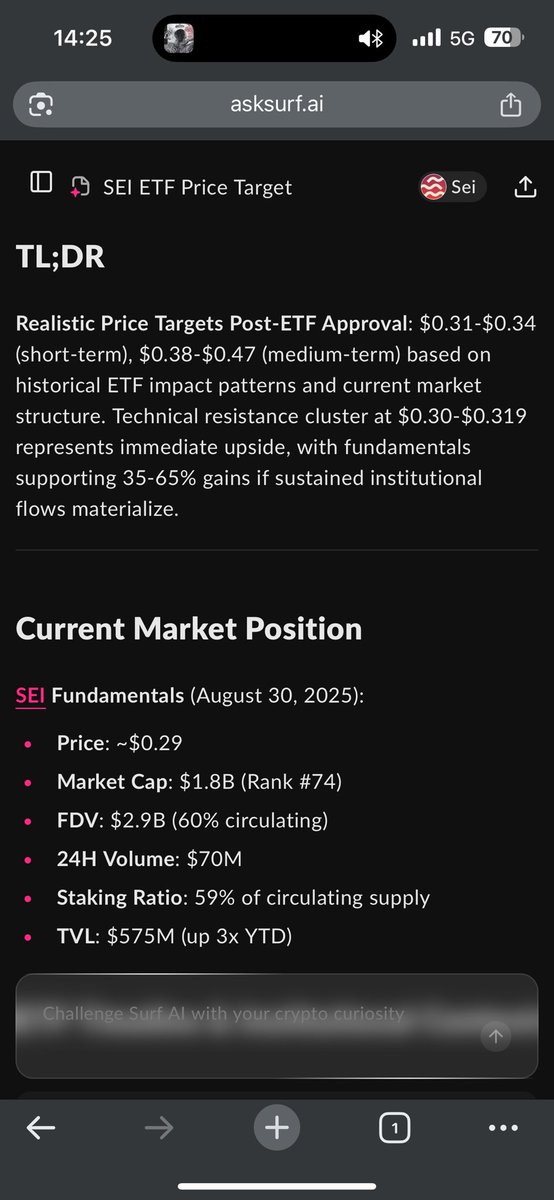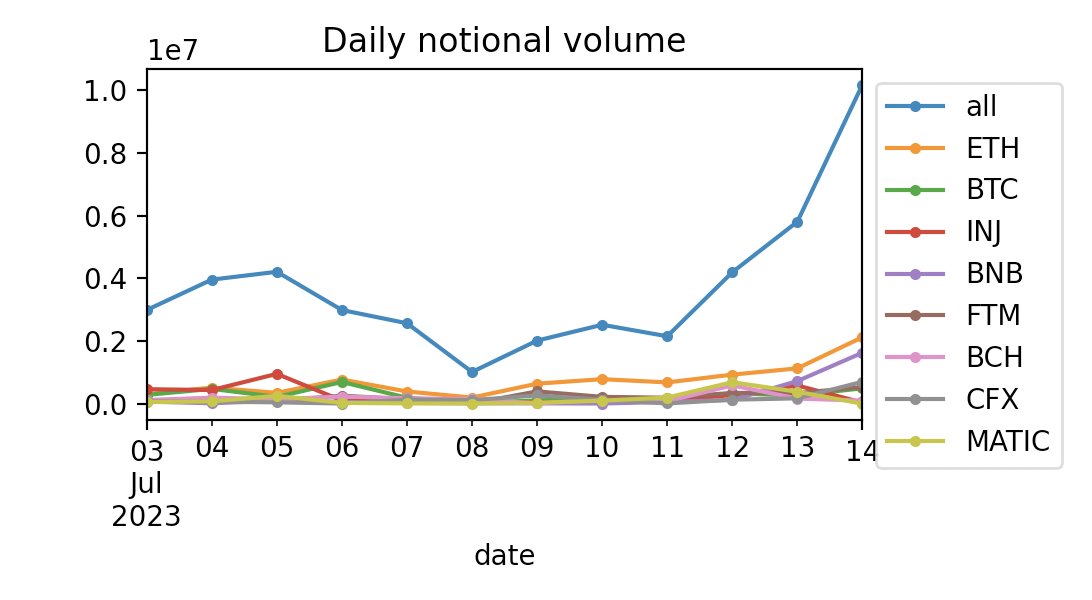Cours de Injective
en EUR

À propos de Injective
Avis de non-responsabilité
Performance du cours de Injective
Injective sur les réseaux sociaux




Guides

Créez gratuitement un compte OKX.
Approvisionnez votre compte.
Choisissez votre crypto.
FAQ Injective
Plongez dans l’univers Injective
Injective est une blockchain de couche 1 ouverte et interopérable conçue pour le secteur de la finance qui impulse la nouvelle génération d’applications de la DeFi, dont les plateformes décentralisées de trading au comptant et de dérivés, les teneurs de marchés automatisés, les protocoles de prêt, les protocoles de gestion d’actifs, etc. Fondée en 2018 par Eric Chen et Albert Chon, Injective Lab est une société de recherche et de développement qui contribue à Injective. L’objectif d’Injective est de créer un système financier réellement libre et inclusif grâce à la décentralisation, et de devenir la blockchain la mieux adaptée aux opérations financières. Injective est la seule blockchain qui offre aux développeurs des modules prêts à l’emploi performants, tels qu’un carnet d’ordres entièrement décentralisé, qu’ils peuvent utiliser pour concevoir un large éventail d’applications sophistiquées.
Fonctionnement d’Injective
De façon unique, Injective fournit aux développeurs de puissants modules prêts à l’emploi qui les aident à créer des dApps inégalées :un module de carnet d’ordres décentralisé et de trading de produits dérivés, un module d’options, un module d’oracle, et bien plus encore facilitent le lancement rapide d’applications de la DeFi. Construite sur le Cosmos SDK, la blockchain est capable d’atteindre une finalité de transaction instantanée grâce au cadre de consensus de preuve d’enjeu Tendermint. Enfin, Injective facilite aussi les transactions cross-chain rapides entre les plus grands réseaux de couche 1 tels qu’Ethereum, Solana, Polkadot et les blockchains compatibles avec l’IBC.
Cours et tokénomique d’Injective
Le jeton utilitaire et de gouvernance natif d’Injective est l’INJ, qui sert à protéger la blockchain de couche 1 Injective au moyen d’un mécanisme de preuve d’enjeu (PoS). Moteur de la blockchain et de son écosystème en pleine expansion, le jeton INJ possède une offre maximale de 100 millions d’unités. Voici les autres caractéristiques importantes de la tokénomique d’Injective :
- Incitations aux développeurs : 40 % des frais générés par les utilisateurs sur les dApps conçues sur Injective sont reversés aux nouveaux développeurs créant sur Injective.
- Cumul de la valeur des frais de protocole : 60 %, voire plus de la totalité des frais issus des DApps sont injectés dans des événements de rachat et de brûlage on-chain.
- Sécurité basée sur la preuve d’enjeu (PoS) Tendermint : les INJ protègent la blockchain Injective au moyen d’un mécanisme de PoS. Les validateurs et les délégateurs peuvent tous deux prendre part au staking.
- Gouvernance : le jeton INJ gouverne tous les composants d’Injective, et toutes les propositions font l’objet d’un vote de gouvernance de la DAO.
À propos du fondateur
Injective Labs a été cofondée par Eric Chen et Albert Chon en 2018. PDG d’Injective Labs, la passion d’Eric Chen pour la crypto et la blockchain est née en minant des Ethereum et en prenant part à des recherches sur la cryptographie à l’université, où il a étudié la finance et l’informatique. Après avoir travaillé pour un grand fonds spéculatif crypto, il a décidé d’abandonner ses études et a fondé Injective Labs avec Albert Chon (directeur technique).
Accomplissements d’Injective
Injective a parcouru un long chemin depuis ses débuts. En août 2022, la blockchain a levé 40 millions US$ pour financer l’expansion des applications financières sur sa couche 1, et en janvier 2023, elle a lancé l’Injective Venture Groupe d’une valeur de 150 millions US$ pour soutenir les applications décentralisées (DApps) prometteuses conçues sur Injective. En novembre de la même année, le projet a fêté le deuxième anniversaire de son mainnet et a dépassé les 314 millions de transactions, a compté plus de 44 millions de jetons INJ stakés et a enregistré 5,7 millions de jetons INJ brûlés dans le cadre des enchères de brûlage hebdomadaires.
Questions fréquentes sur Injective (INJ)
- Qu’est-ce qu’Injective (INJ) ?
Injective est une blockchain de couche 1 ouverte et interopérable conçue pour le domaine de la finance, qui impulse la nouvelle génération d’applications de la DeFi.
- Quelles sont les caractéristiques principales de la technologie blockchain d’Injective ?
Ses caractéristiques principales incluent des modules du Web3 de haute qualité prêts à l’emploi, des contrats intelligents dynamiques, une interopérabilité sans précédent et un mécanisme de consensus Tendermint ultra sécurisé.
- Quelle est l’utilité du jeton INJ ?
Le jeton INJ protège la blockchain de couche 1 Injective au moyen d’un mécanisme de preuve d’enjeu (PoS). Il est aussi utilisé dans la gouvernance, la saisie de la valeur des frais de protocole, les incitations aux développeurs et la sécurité basée sur la PoS Tendermint.
Déclaration ESG





































